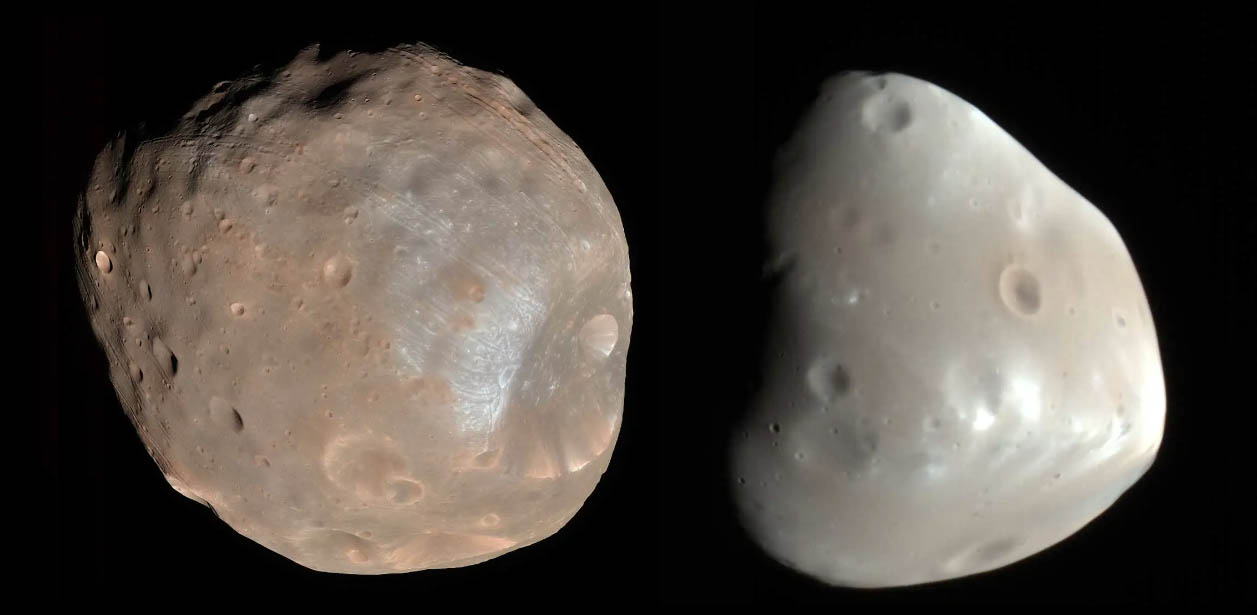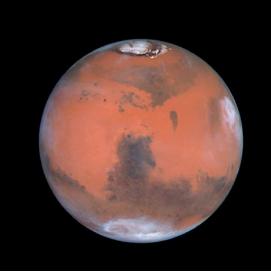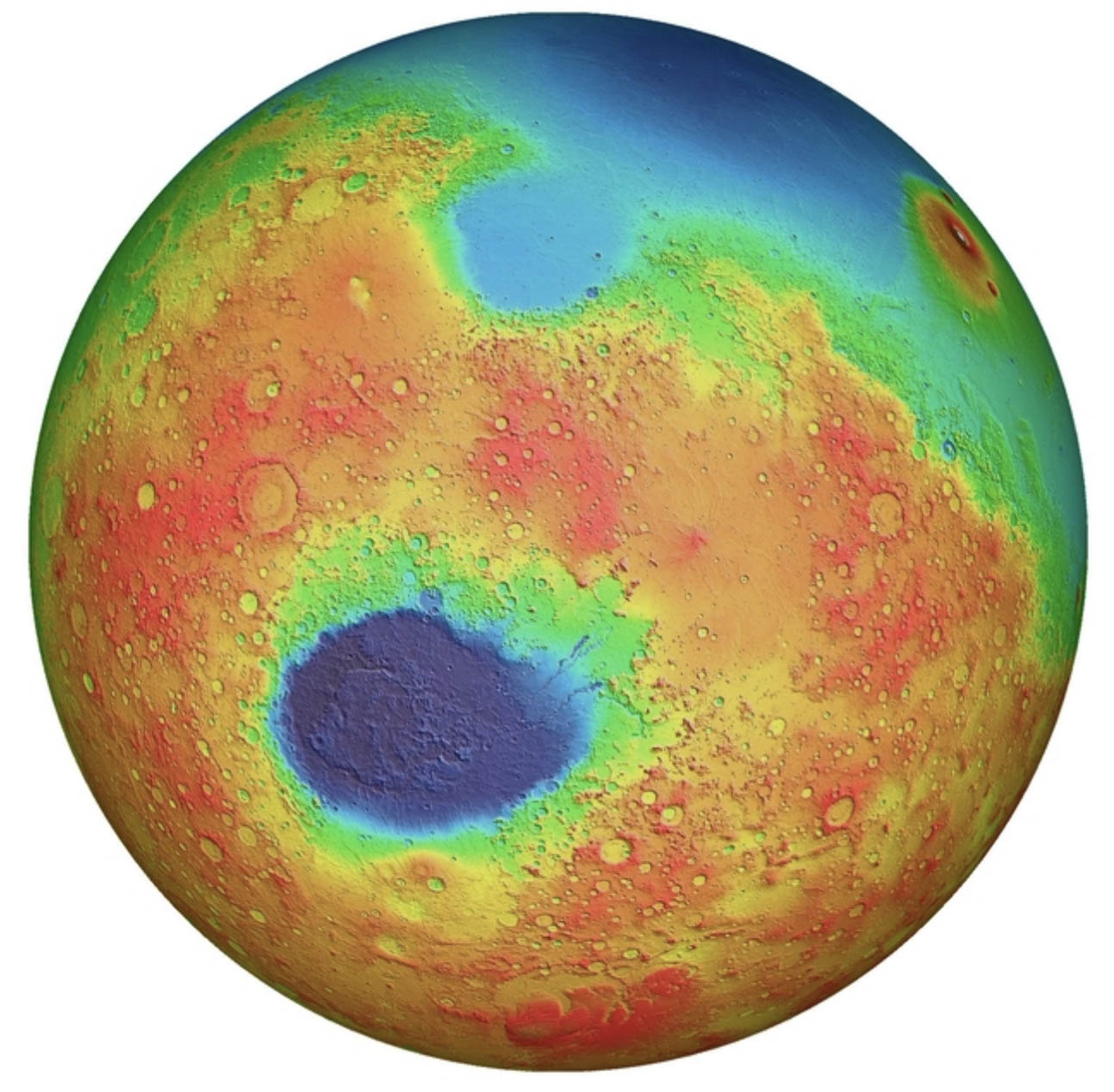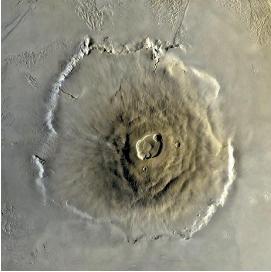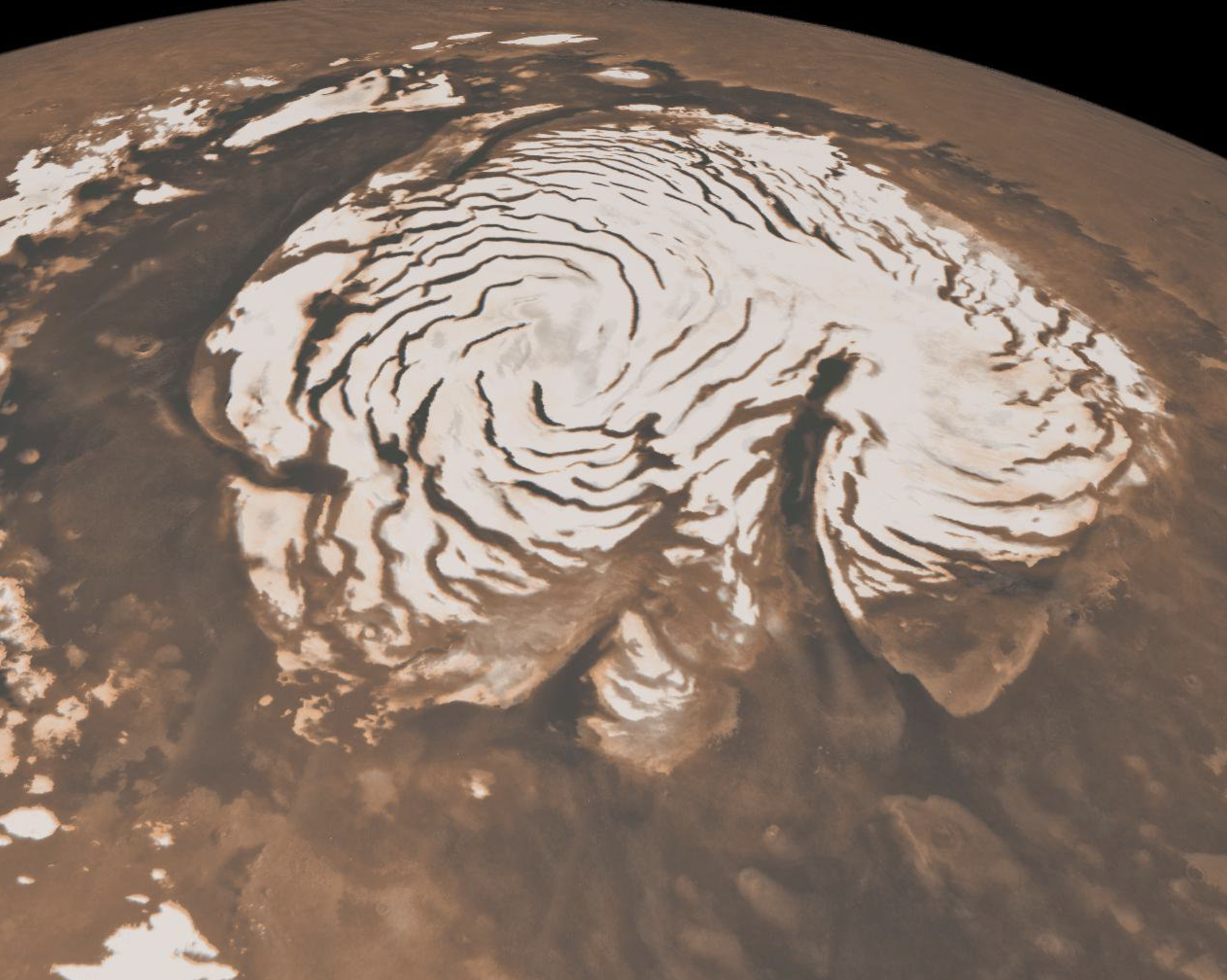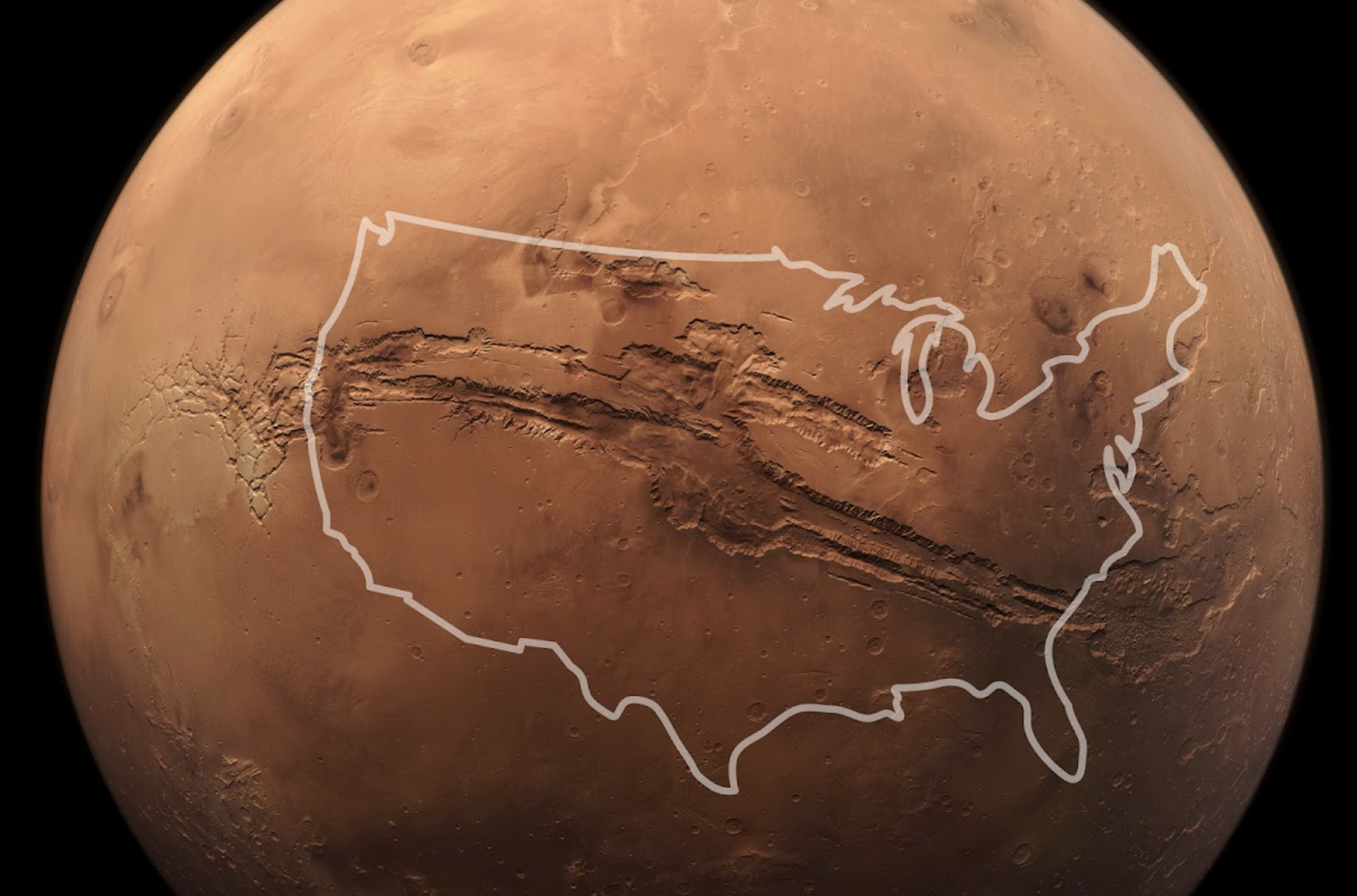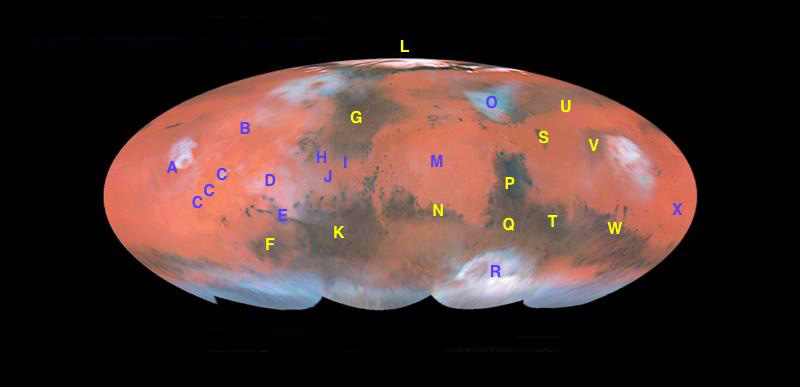Mars
Facts about Mars
• Fourth planet from the Sun
• It’s a Terrestial Planet & may have microbial life in its soil
Diameter: 4,228 miles (about 1/2 Earth’s)
Mass: 0.12 of Earth’s mass
Density: 3.95 where water = 1 (Earth is 5.5)
Gravity: 1/3 of Earth’s
Albedo (% of Sunlight reflected): 15%
Rotation on Axis: 24 hours, 37 minutes
Tilt on Axis: 25.3° degrees compared to Earth’s 23.4°
Distance from Sun: 141,640,000 miles
Revolution about Sun: 1.9 years or 687 days
Inclination of Orbit to Earth’s Orbit: 1.85°
Atmosphere: 95% Carbon Dioxide, 2.7% Nitrogen, 1.6% Argon, 0.2% Oxygen (Earth has 77% Nitrogen and 21% Oxygen
Temperature: Ranges from –207° F to +80° F. The high is just about the surface, at noon and at the equator during summer.
Moons: 2 irregularily shaped moons, Phobes (17x13 miles) and Deimos (10x8 miles)
Most interesting features in a small telescope: Even when Mars is at its closest, it is relatively small, but with some patience and repeated observations over a few weeks, you will be able to see polar caps, clouds and the darker-colored surface areas. And different features can be seen as the planet rotates. When the north pole is facing Earth, it is very easy to see this white cap.
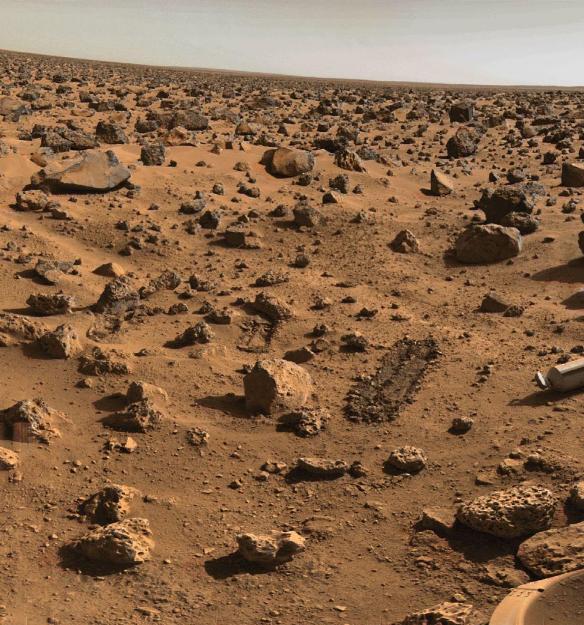
Picture from the first lander on Mars, Viking, in 1976. Dr. Alan Binder, a good friend of mine was one of a few people in charge of the imaging.
